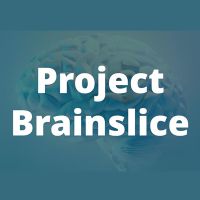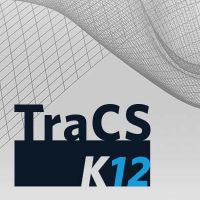Satterlee, a former TL1 fellow and current K12 scholar with NC TraCS, is developing a new way to test cancer drugs on a patient's still-living tumor. Not only has Satterlee's career developed from postdoc to faculty member, but the brain slice technology has also shown great potential as a game-changer for people facing cancer.
Andrew Satterlee focuses on the research that brain cancer patients need
Satterlee, a former TL1 fellow and current K12 scholar with NC TraCS, is developing a new way to test cancer drugs on a patient's still-living tumor.
Andrew Satterlee, PhD
"I'm going to get on my soapbox a little bit," Andrew Satterlee says. "There's a gap in academia between what journals and grants want, and what patients actually need."
Satterlee is a cancer researcher at the UNC Eshelman School of Pharmacy who studies brain tumors. And he's not afraid to mince words about some of the roadblocks he sees in medical research.
"We all want our technologies, the things that we're spending so much time and energy and money preparing, we want those to get to patients," Satterlee says. But, he adds, that often requires a lot more than just writing grants and authoring papers. It means understanding how to develop a clinical trial, for example, or how to move through the regulatory process.
In 2018, Satterlee saw these two paths diverge in his own career. At the time, he was a postdoctoral researcher in the lab of Shawn Hingtgen, another cancer researcher at UNC. Satterlee's work involved studying tumor cell growth with brain slice technology, a unique research method that uses a thin layer of brain tissue from a rat to create a microcosm of the brain ecosystem on the lab bench.
Fast forward to 2024, and brain slices are the basis of a lot of cancer research at UNC, including Satterlee's. But in 2018, most of this research was not yet underway—all Satterlee had was a cool piece of technology with a lot of potential.
"We had realized at that point that this brain slice technology could really go somewhere," Satterlee says. "But we didn't know where yet."
What Satterlee did know is that he wanted his work to lead directly toward improving patient care. So, he turned to the North Carolina Translational and Clinical Sciences (NC TraCS) Institute to learn how to focus his research on translation, the science of turning basic research into usable medicine.
What started with a TL1 fellowship with NC TraCS to learn the ropes of translational medicine eventually became a K12 award, one of the institute's premier opportunities for early-career faculty to focus on translational science. And in that time, not only has Satterlee's career developed from postdoc to faculty member, but the brain slice technology has also shown great potential as a game-changer for people facing cancer.
Researchers have been using slices of brain tissue for decades to better understand the workings of the brain. By studying a network of brain cells in a dish, scientists can replicate the conditions of a stroke, for example, or test various drugs, watching in real-time to see how the brain cells respond.
As a postdoc, Satterlee had already begun using brain slices as a medium for growing tumor cell lines, watching as these clumps of cancerous cells grew and proliferated. The technology provided him much more useful insights than he would have gotten from growing those cells on a standard plastic dish. But Satterlee wanted to see if he could take that one step further.
"What if we could get a tumor from a patient and put it down on the slice?" he remembers thinking. "Would it survive?"
Brain tumors, once excised from the body, don't always survive well. But if you could extract a patient's tumor and then keep it alive for long enough, you could do all kinds of testing on it—assessing exactly how that patient's specific cancer might respond to different drugs, for example.
At this point, Satterlee had been awarded a TL1 fellowship through NC TraCS, his first connection to the institute. The TL1 was a two-year program designed to get researchers familiar with the concepts and challenges of translation while working on a translational science project. For Satterlee, that project was the brain slice—specifically, how to translate this technology's potential into a promising research initiative.
In science, sometimes the best way forward is simply to try something. Satterlee got approval to acquire some brain tumors at UNC, collected and prepared those tumors in the laboratory, and dropped them on some brain slices, watching to see what happened. Remarkably, his idea worked. With sample after sample, these tumors survived and stayed alive on the brain slices, enabling him to watch and evaluate these cancers in real-time.
"That's when the lightbulb went off," Satterlee says.
Satterlee, along with Hingtgen and Albert Baldwin, a researcher at the UNC Lineberger Comprehensive Cancer Center, was also in the process of applying for a Collaborative Innovation CTSA UO1 grant through the NIH's National Center for Advancing Translational Sciences (NCATS) to expand the brain slice research. That grant required having three universities with CTSA hubs working together, so they also teamed up with researchers at Duke and the University of Florida who work with slice technology. Together, they formed Project Brainslice, which is now the umbrella for brain slice research at all three universities.
SLiCE Core Facility team
L to R: Rajaneekar Dasari, Breanna Mann, Andrew Satterlee, Xiaopei Zhang and Adebimpe Adefolaju in the brain slice lab.
Satterlee says applying for the UO1 grant was the "triumph" of his TL1 fellowship. But he wasn't just focused on the next grant. He was also working on developing the technology itself, such as exploring what the brain slices can offer and learning more about the market and business side of healthcare innovation. He says that the experience of the TL1 helped him recognize that there was a lot of potential in using the brain slice technology to study patient tumor tissue, and "think about the progression of the platform through a translational lens, and not a standard academic scientist lens."
With this experience under his belt, Satterlee was eventually able to make the transition from postdoc to faculty member with Eshelman Innovation, the innovation wing of the Eshelman School of Pharmacy, a year and a half ago. And as faculty, he could then apply for his own grants, including the K12 Junior Faculty Career Development Program through NC TraCS, which he was awarded last year.
Satterlee and his colleagues published a paper in 2023 documenting the initial steps toward using brain slices as a drug discovery platform for cancer patients. With this technology, the team can now take tumors resected from patients during surgery, place chunks of those tumors on a brain slice to keep them alive and test those tumor chunks against an array of cancer-fighting drugs. By evaluating how a patient's still-living tumor responds to different drugs, this process could soon help clinicians and patients understand which drugs might work best against their specific tumor, and thus make more informed treatment decisions.
There's still a lot of research needed before this possibility could become a reality, but the brain slice technology is already helping to accelerate cancer research. Recently, the brain slice team opened a core facility for brain slice testing at UNC. This research hub will not only help Satterlee and his colleagues efficiently test their drug discovery platform, but also allow any other researcher at the university to test new drug candidates against living tumor tissue excised from consenting patients.
"Until now, not many folks have had the opportunity to test their drugs, their ideas, on patient tumor tissue," Satterlee says. "And now, we have a special opportunity for labs at UNC to test their drugs against tumors resected at UNC."
Science, famously, can be slow and halting, and research can often linger in obscurity for years before making it out of the lab and into doctor's offices. But through his training on translational science with NC TraCS—as well as some exciting developments in brain cancer research—Satterlee has actively forged a new path forward for his career, with a mind focused squarely on making a tangible difference in the lives of brain cancer patients.
"We've got to think about things differently," Satterlee says. "And that's what TraCS and NCATS—and what we—want to do."
NC TraCS is the integrated hub of the NIH Clinical and Translational Science Awards (CTSA) Program at the University of North Carolina at Chapel Hill that combines the research strengths, resources, and opportunities of the UNC-Chapel Hill campus with partner institutions North Carolina State University in Raleigh and North Carolina Agricultural and Technical State University in Greensboro.


